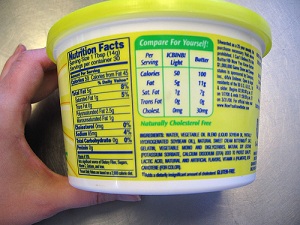Jamie Lawrence writes for EPI Labelers where you can find bottle labelers and a label applicator for your packaging and promotional needs.
Have you ever wondered just what is in some of the foods you’re eating?
Sure you can read the label, but with all the unpronounceable words to contend with (what the heck is monosodium glutamate anyway?) and the small problem of putting all those numbers into context (is 240 calories good or bad?) you may be scratching your head over what to make of the information. But if you want to learn to eat well and ensure better health, you’re going to have to learn just what you’re putting in your body, and that starts with the food label. Here’s a short tutorial on what the label says and how you can apply it to your own diet.
– For starters, you’re going to see information pertaining to the serving size. This is important because it helps you to measure how much you’re consuming. If, for example, you’re used to eating a full bowl of cereal, you may be astonished to find that you’ve been ingesting 3-4 servings (meaning 3-4 times the calories you thought). Or you might assume that one can of soup is equal to one serving (when it could be more). For this reason, you should always be aware of the serving size and take it into account when calculating nutritional values.
– Next you’ll see the number of calories listed (remember, this is per serving). The average diet consists of 2,000 calories, so this will help you break down how much you should be eating throughout the day. Following that you’ll see fats, cholesterol, sodium, carbohydrates, protein, and vitamins listed, with amounts in either grams (or milligrams) or a percentage of daily value (or both). Fats, cholesterol, sodium, and sugar should be kept to a minimum while dietary fiber and vitamins should be abundant. As for how to read the numbers, remember that they’re all based on a 2,000 calorie a day diet. When viewed in that light, you can see the percentage of daily recommended intake that is present in each serving.
– Finally, you’ll find a list of ingredients, which you should know are itemized in descending order (so that those listed first are present in the greatest amount). If you have trouble reading the names, or you simply have no idea what the ingredients are, you have likely chosen a food item that has a lot of chemicals (such as preservatives) included. This is a good indication that what you’re about to eat is not very natural or healthy.
– The nutrition label can only help you so much. Ultimately, you are the one who makes decisions about what you choose to consume. But by learning to read and understand the labels attached to food, you have a better chance to make healthy choices that will leave you feeling good and full of energy. So take your time at the grocery store to compare labels and see if there are better options than what you’ve been getting. It could make a big difference in your overall health.
How often do you read food labels?
